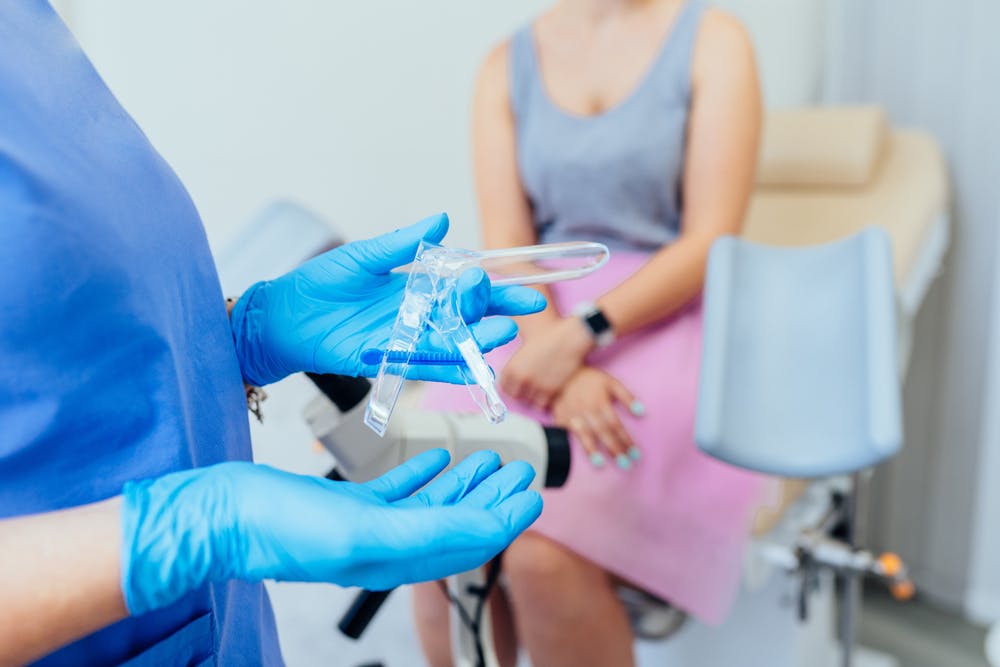Even though vaginal fistulas represent a significant and distressing problem for women, this condition's etiology, diagnosis and treatment methods remain unfamiliar to many doctors. By definition, a vesicovaginal fistula is an abnormal connection between the vagina and the urinary bladder. Related types of fistulas that may form include rectovaginal, anovaginal and ureterovaginal fistulas.
Certain imaging tests such as MRI or CT scans have been traditionally used to evaluate for fistulas. However, gynecologists now recognize color Doppler ultrasound as a less expensive, less invasive diagnostic test that quickly and accurately identifies fistulas.
Fistula Causes, Classifications and Symptoms
Vesicovaginal fistulas can result from complications from pelvic surgeries, specifically hysterectomies. Other major causes include radiation therapy to the pelvis, pelvic malignancy, penetrative trauma or inflammatory processes such as Crohn's disease or diverticulitis. Women can also develop vesicovaginal fistulas as a result of prolonged or obstructed labor.
Fistulas are generally categorized according to size and, in some cases, location. Simple fistulas are generally less than 0.5 cm, while complex fistulas may be as large as 2.5 cm. Rectovaginal fistulas may be categorized according to their location between the vagina and lower intestine.
The symptoms caused by fistulas depend on the type of fistula present, but many are often particularly upsetting for patients. Specific symptoms that should raise suspicions and prompt a thorough evaluation include:
- Continuous urinary incontinence
- Malodorous vaginal discharge
- Passage of feces or flatus from the vagina
- Recurrent urinary tract infections
- Vaginal bleeding
- Vaginitis
Using Ultrasound to Diagnose Fistulas
To begin the diagnostic process, doctors should perform a thorough history and physical examination, including a pelvic exam. Some fistulas, such as low rectovaginal fistulas, may be apparent on visual inspection. However, most fistulas are not easily seen during a typical pelvic exam.
Further imaging tests may be necessary if a patient's symptoms suggest fistula formation. Ultrasound's growing role in diagnosing disorders of the pelvic floor makes it an appropriate first-line diagnostic imaging option.
Both transvaginal and endoanal ultrasound provide detailed images of fistulas occurring along the vaginal canal. According to the Indian Journal of Surgery, color Doppler ultrasound is particularly useful for diagnosing fistulas: One study found this tool could accurately identify a fistula in 11 out of 12 patients. A fistula may be visualized using either a transvaginal or an endoanal ultrasound probe, and appears on color Doppler as an oblong shape.
Vesicovaginal fistulas are visualized as a jet phenomenon originating in the bladder and traveling through the bladder wall to the vagina. In the case of rectovaginal fistulas, simple fistulas appear as straight lines, and more complex cases appear as combined branches or abscess networks that create a "Y" or "T" shape.
Ultrasound's Role in Planning Treatment
In almost all cases, surgery is required to effectively manage fistula symptoms and prevent complications. However, a study in the Journal of Clinical Medicine emphasizes that doctors should use ultrasound findings to inform treatment decisions. Knowing the exact shape, size and location of fistulas allows doctors to best plan surgical approaches and predict the likelihood of success.
Surgeons most commonly take a transrectal approach to fistula repair, but a transvaginal approach offers superior surgical access and is emerging as a preferred option, according to Techniques in Coloproctology. For fistulas occurring higher in the vagina or intestine, other methods such as laparoscopic, robotic or open surgical approaches may be used to correct abnormalities.
Any patient presenting with symptoms of a vesicovaginal fistula should be immediately evaluated using the latest diagnostic methods, including ultrasound. Ultrasound has been shown to accurately identify fistulas so that patients can get a diagnosis and relief from their complications sooner.


